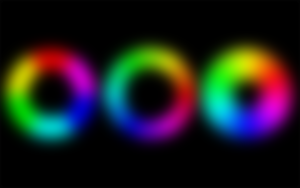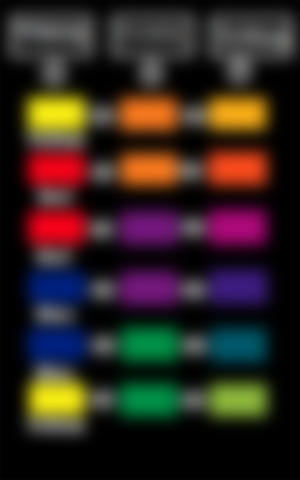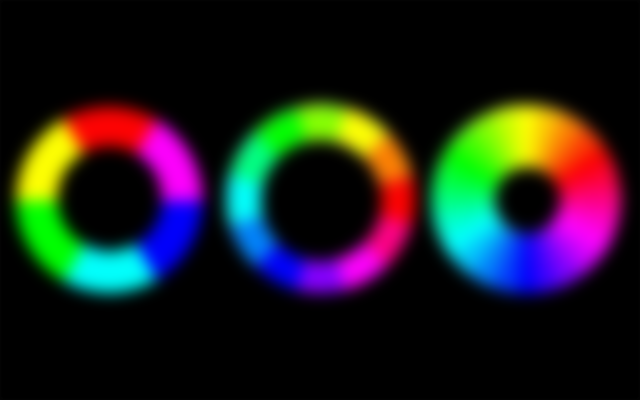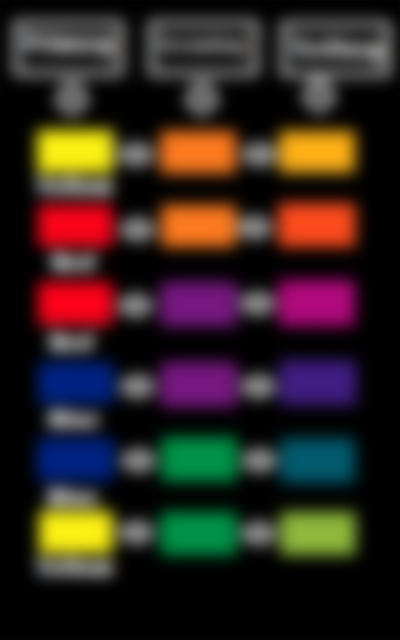
In this opportunity we will cover a little more about the subject of colors, specifically about the chromatic circle, which is a graphic representation that segments and organizes colors based on the tone or hue of each one. Possibly, the concept of the chromatic circle is familiar to you, as we all studied it in school. However, back then you were too young to understand for sure how important it is nowadays for marketing, advertising and the definition of visual identity.

Technically, it is a circle with 6 colors reflected in the decomposition of light with respect to the solar spectrum. Specifically, the also called chromatic disc segments the following colors: purple, red, yellow, green, blue and dark blue. Therefore, the main utility of the basic chromatic circle is that it reflects the link of harmony and contrast between the primary colors with the secondary and tertiary colors. For experts in visual art and different types of designs, this concept is valued as a tool to discover and apply combinations.
In that sense, to understand the phenomenon of color, we help ourselves with the idea of a representation of the different colors around a center. As defined above, color is an interpretation that our brain makes of the different wavelengths.
- The primary color: there are three colors corresponding to each vertex of an equilateral triangle described in the chromatic circle. Only these 3 colors describe the full spectrum (red, green, blue) are those perceived by our human eyes.
- Secondary color: The complementary color of a primary color. It is formed by mixing two primary colors. For example, if we combine green + red, we obtain as a result the color yellow.
- Derivative colors: are the colors obtained by mixing primary and secondary colors. For example, colors like brown and purple, etc.
Also, the colors of the chromatic circle can be classified into two groups according to the sensation they generate: warm and cold.
- Warm colors: they are associated with color and fire, so they transmit energy and movement. These are pink and yellow.
- As for the cold colors: they are those that are related to natural environments and, at the same time, reflect calm. Green and the blue range are the main ones.
In fact, in psychology, colors have their meaning. Some examples are:
- yellow: represents energy, joy and extroversion.
- red: warmth, love, success, dominance and aggressiveness.
- green: tenacity, growth, autonomy and nature.
In the same vein, the concept of the chromatic circle of colors serves to conceptualize and develop the visual identity of a brand in a coherent and strategic way. Graphic design experts can work on the image of a brand based on a determined group of colors and certain combinations. Color is realism, and realism is confidence. The choice of colors, based on the principles of the chromatic circle, makes users value brands as something palpable and close.
To conclude, the chromatic circle is nothing more than a symbolization of the scale of colors that form the universe and that the human being can observe with his vision. These colors are classified in a staggered and progressive way between different shades of the same color that bring one closer to other different shades. The colors that we quickly distinguish from a color image are the most dominant colors, that is to say, those that appear more frequently than the rest of the colors. Color controls man and not man controls color. Sometimes we try to air-condition, to paint the room in a certain color, so the color influences us psychologically.
what color do you identify yourself with?

Image source: all images are designed by me, on the Canva.com website.
Dear readers, your opinions are very valuable to me, I will be very attentive to your comments. Thank you for investing your valuable time reading my post, best regards.
Articles related:
Disclaimer: I would like to let you know that English is not my mother tongue, I may even make some mistakes in the elaboration of sentences in my posts. Feel free to correct me attentively. It will help me in my learning process.
You can follow me on:
Facebook - Instagram - Youtube
My Blogs:
Ecency - Noise.Cash - publish0x





My colours! So interesting post.